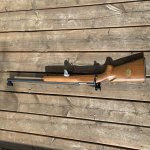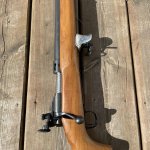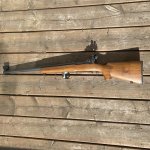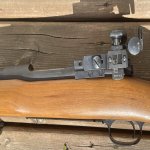Howdy,
Just wondering if anyone could share some information or stories about these two rifles.
First one is a minty Winchester model 70 target model in .308 with a heavy barrel. It was won in a shooting competition in Winnipeg in 1972. It’s sporting a fancy red field rear sight. Looks really well made and seems to be for a certain type of competition shooting that I know nothing about. Doesn’t look like it’s ever been fired.
Second is an old Parker Hale target model in .308, same features as the first one but I’m unsure of the brand of sight on it. And it’s seen use. Any info on these guys would be greatly appreciated! When I did some searching all I found was links to auction sites.
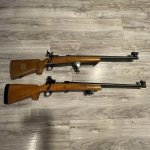
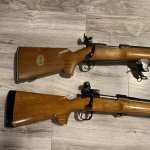
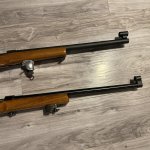
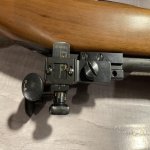
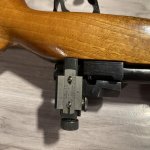
Just wondering if anyone could share some information or stories about these two rifles.
First one is a minty Winchester model 70 target model in .308 with a heavy barrel. It was won in a shooting competition in Winnipeg in 1972. It’s sporting a fancy red field rear sight. Looks really well made and seems to be for a certain type of competition shooting that I know nothing about. Doesn’t look like it’s ever been fired.
Second is an old Parker Hale target model in .308, same features as the first one but I’m unsure of the brand of sight on it. And it’s seen use. Any info on these guys would be greatly appreciated! When I did some searching all I found was links to auction sites.





Attachments
-
 9FBFFF73-DD35-4D68-8760-6FD12593A381.jpg89.5 KB · Views: 180
9FBFFF73-DD35-4D68-8760-6FD12593A381.jpg89.5 KB · Views: 180 -
 AAD38134-E4C4-48BF-939D-00C263C8E33D.jpg108.9 KB · Views: 184
AAD38134-E4C4-48BF-939D-00C263C8E33D.jpg108.9 KB · Views: 184 -
 E8AF3FD4-22BC-4DDB-90D8-D5CFFCC73BDD.jpg108.2 KB · Views: 181
E8AF3FD4-22BC-4DDB-90D8-D5CFFCC73BDD.jpg108.2 KB · Views: 181 -
 91ED38DA-A16D-45A4-BF48-57B864E60FA7.jpg74.4 KB · Views: 179
91ED38DA-A16D-45A4-BF48-57B864E60FA7.jpg74.4 KB · Views: 179 -
 75433EDB-4AF2-4D69-885F-07640509E82A.jpg85 KB · Views: 177
75433EDB-4AF2-4D69-885F-07640509E82A.jpg85 KB · Views: 177















































